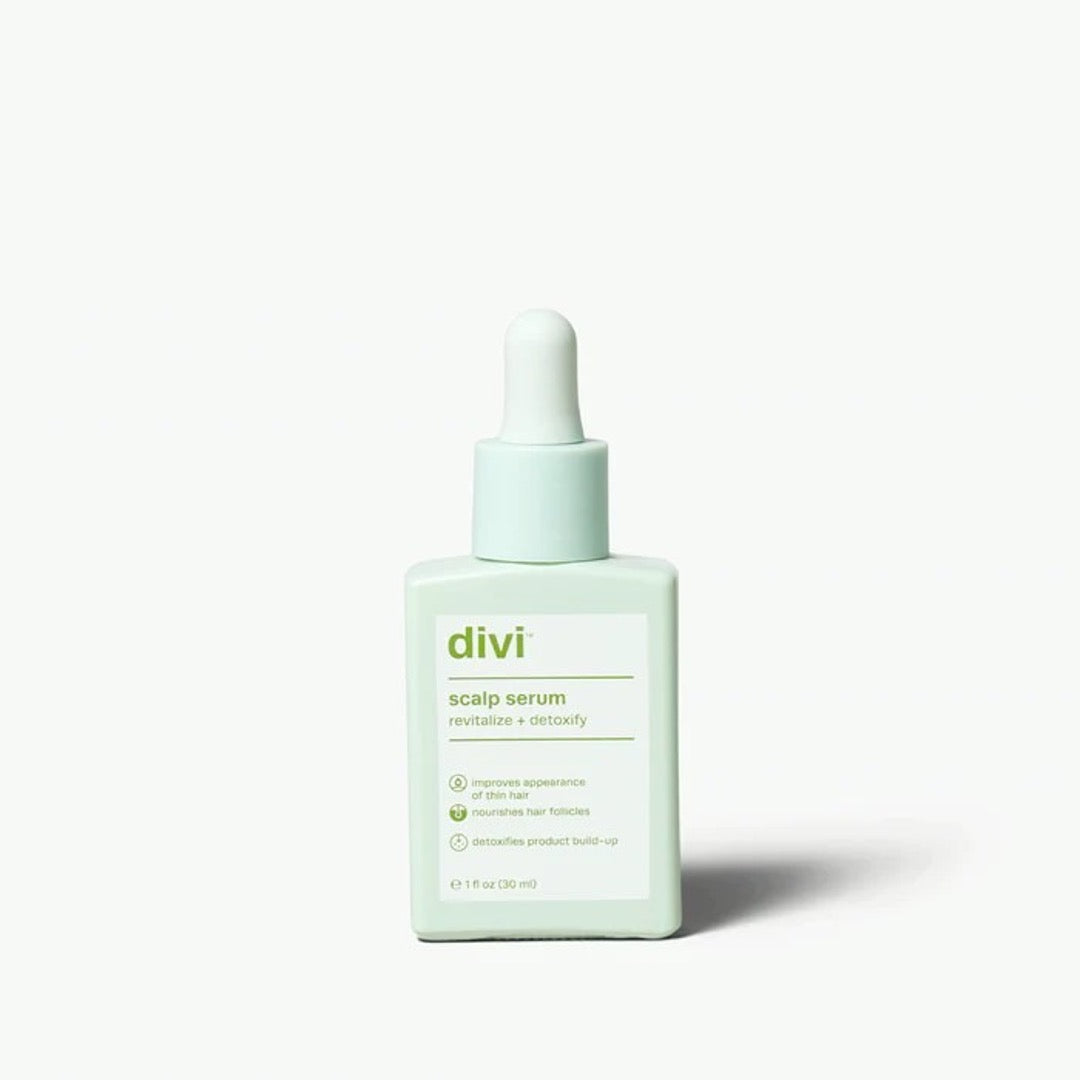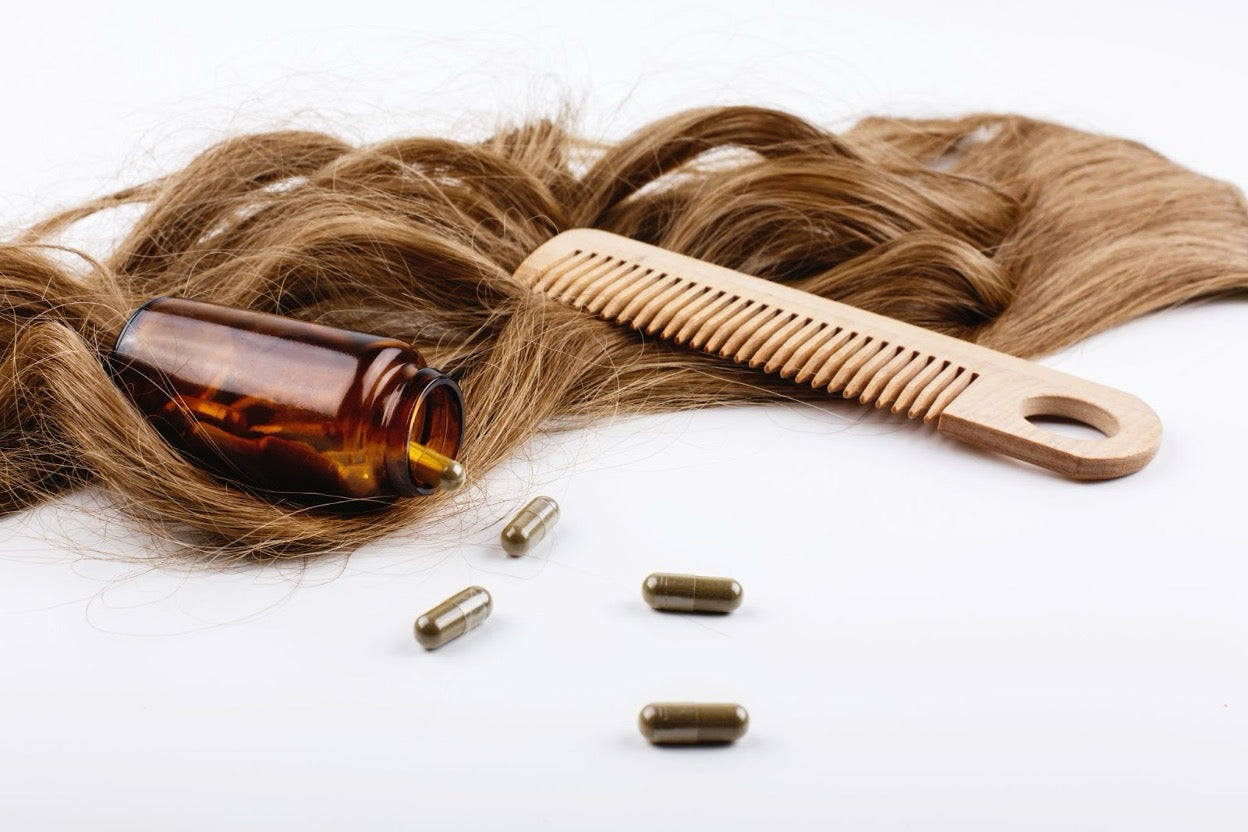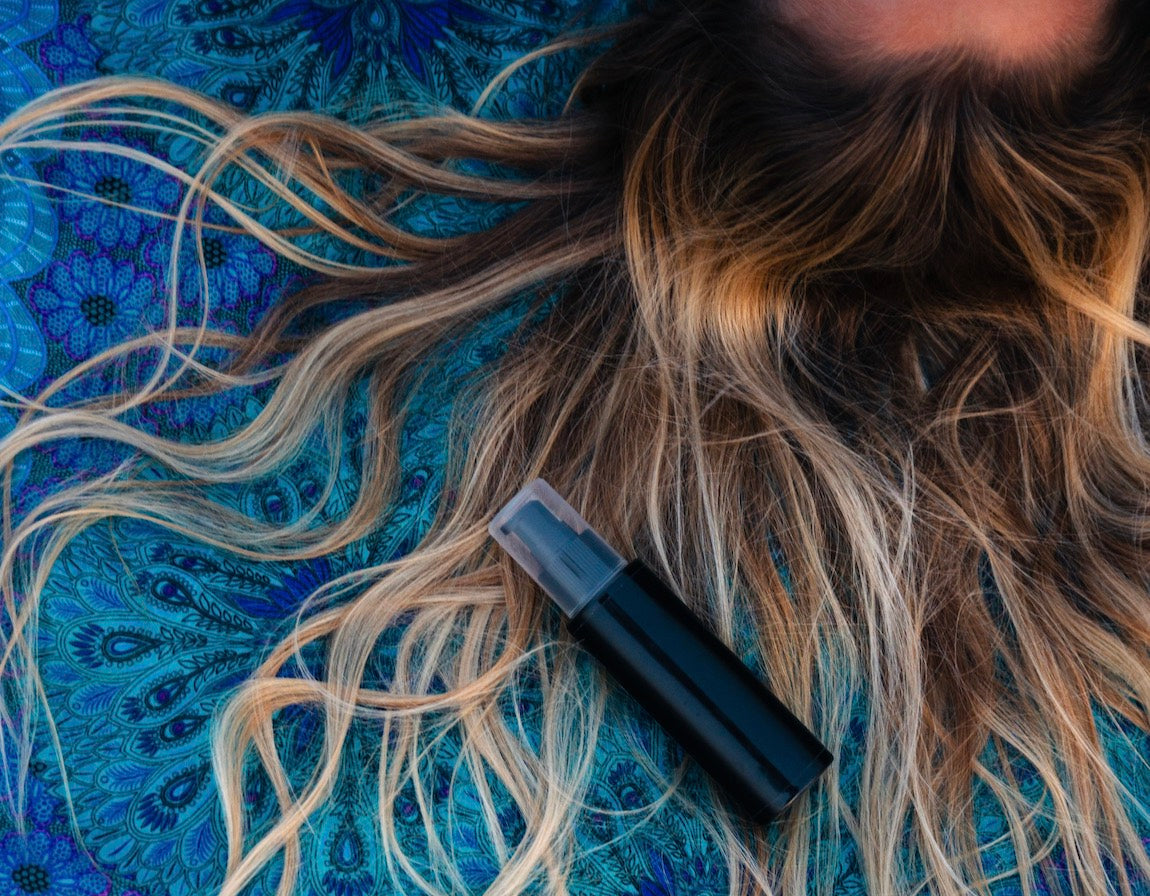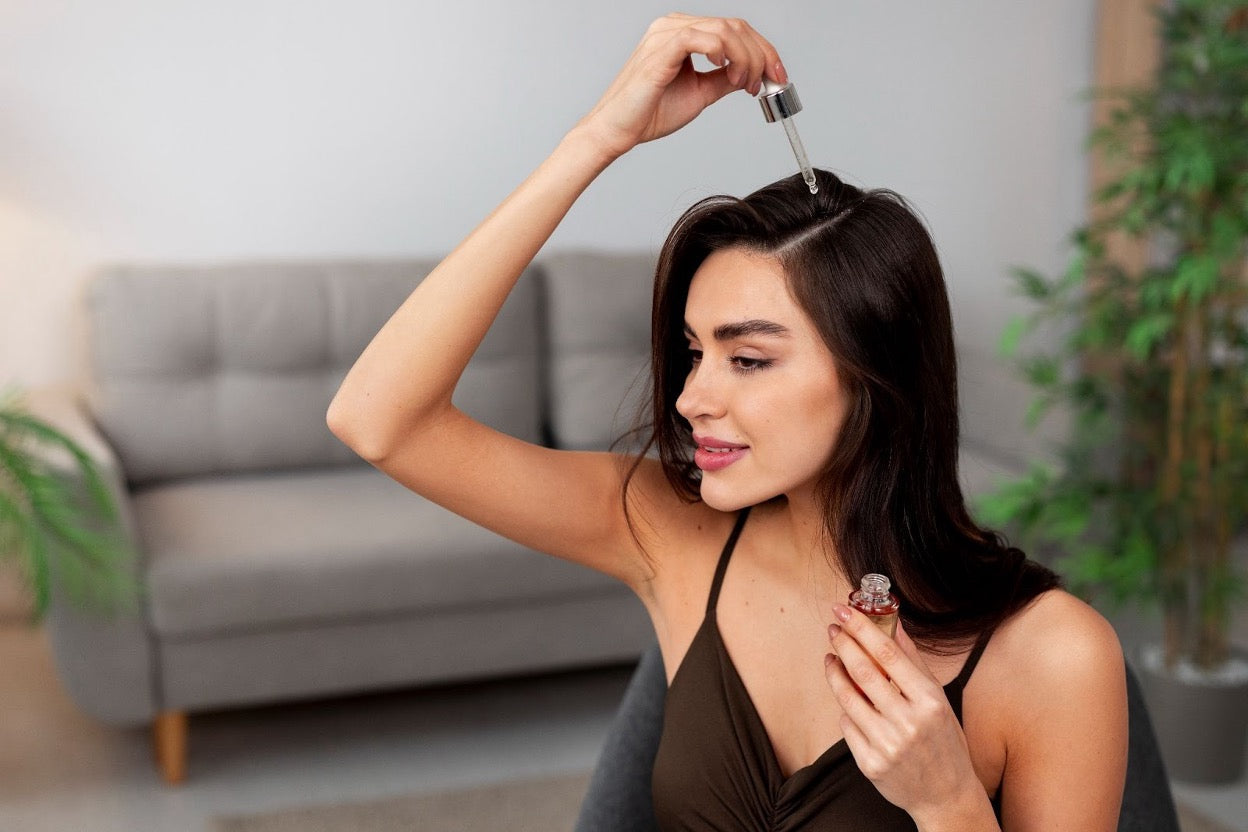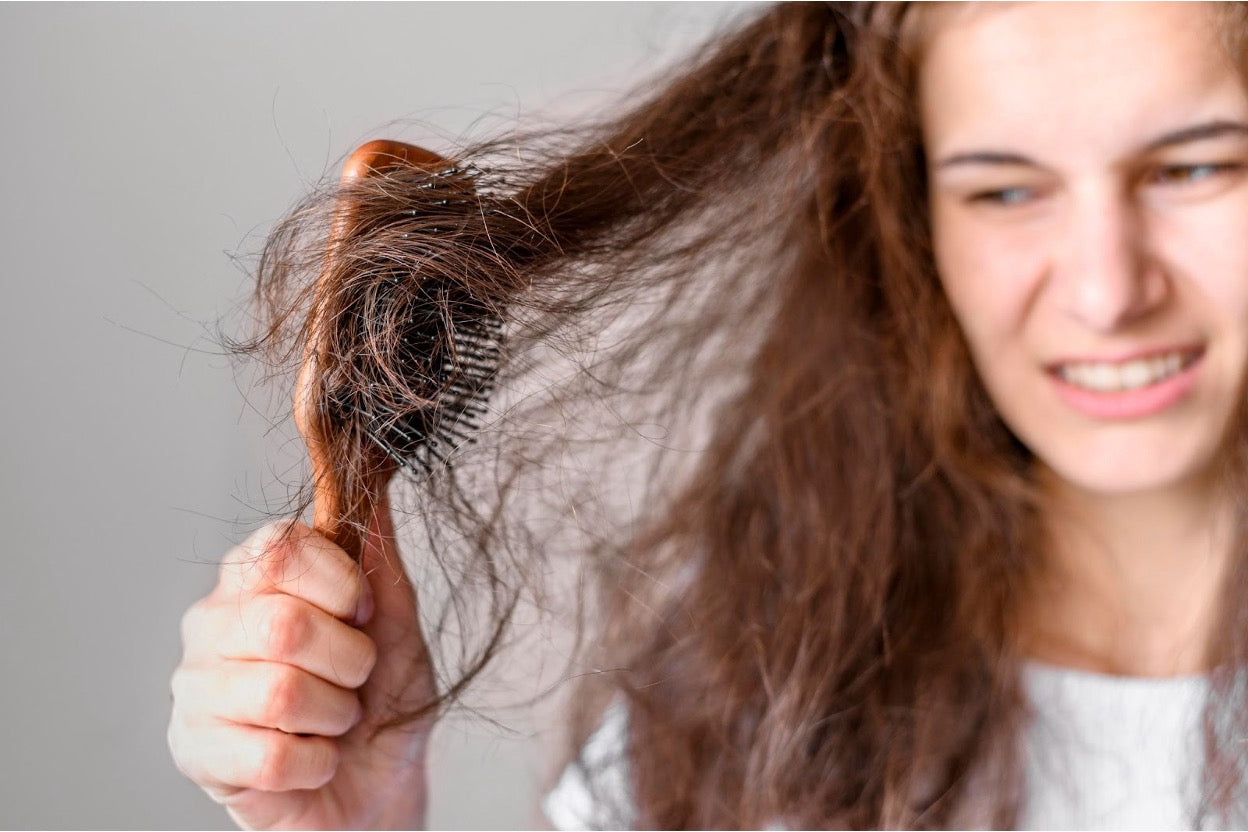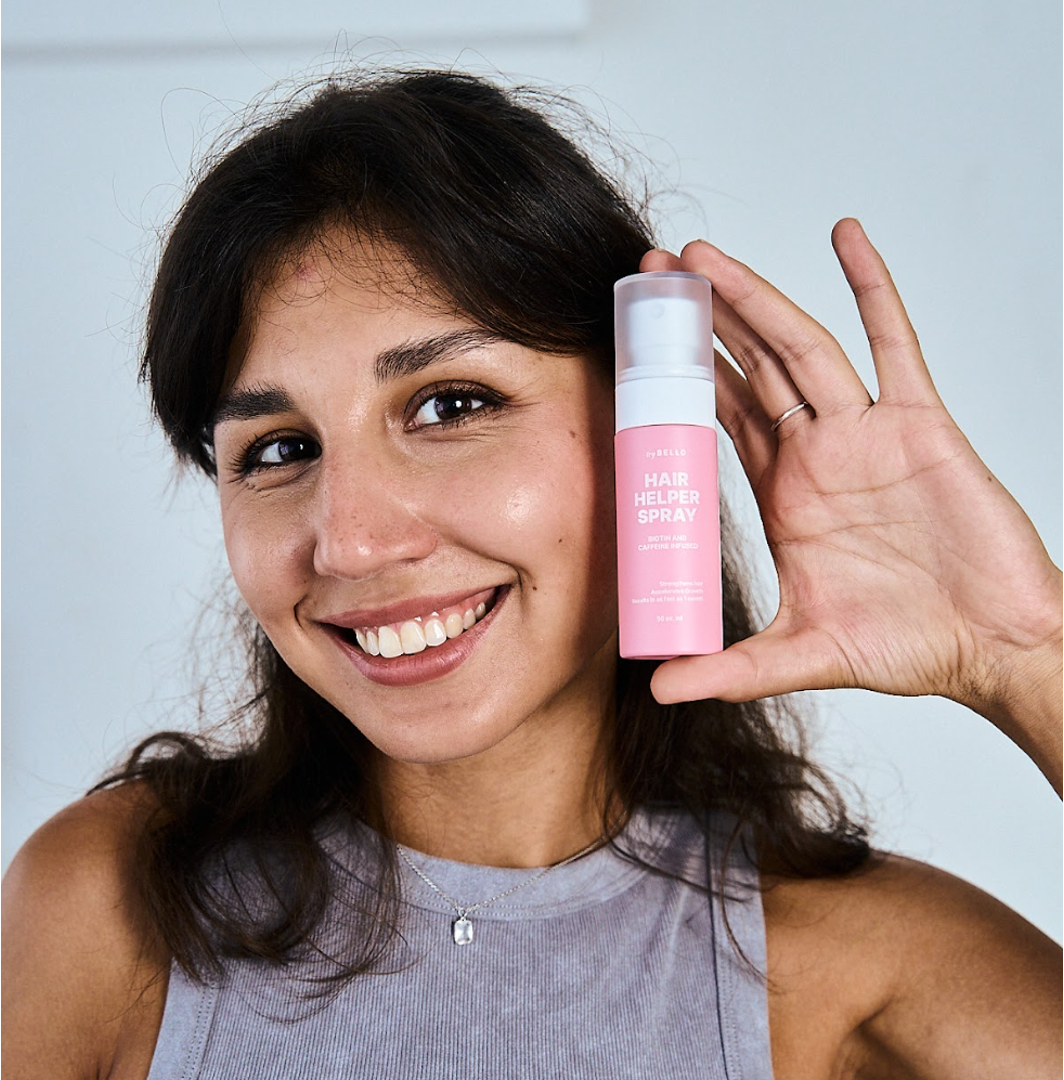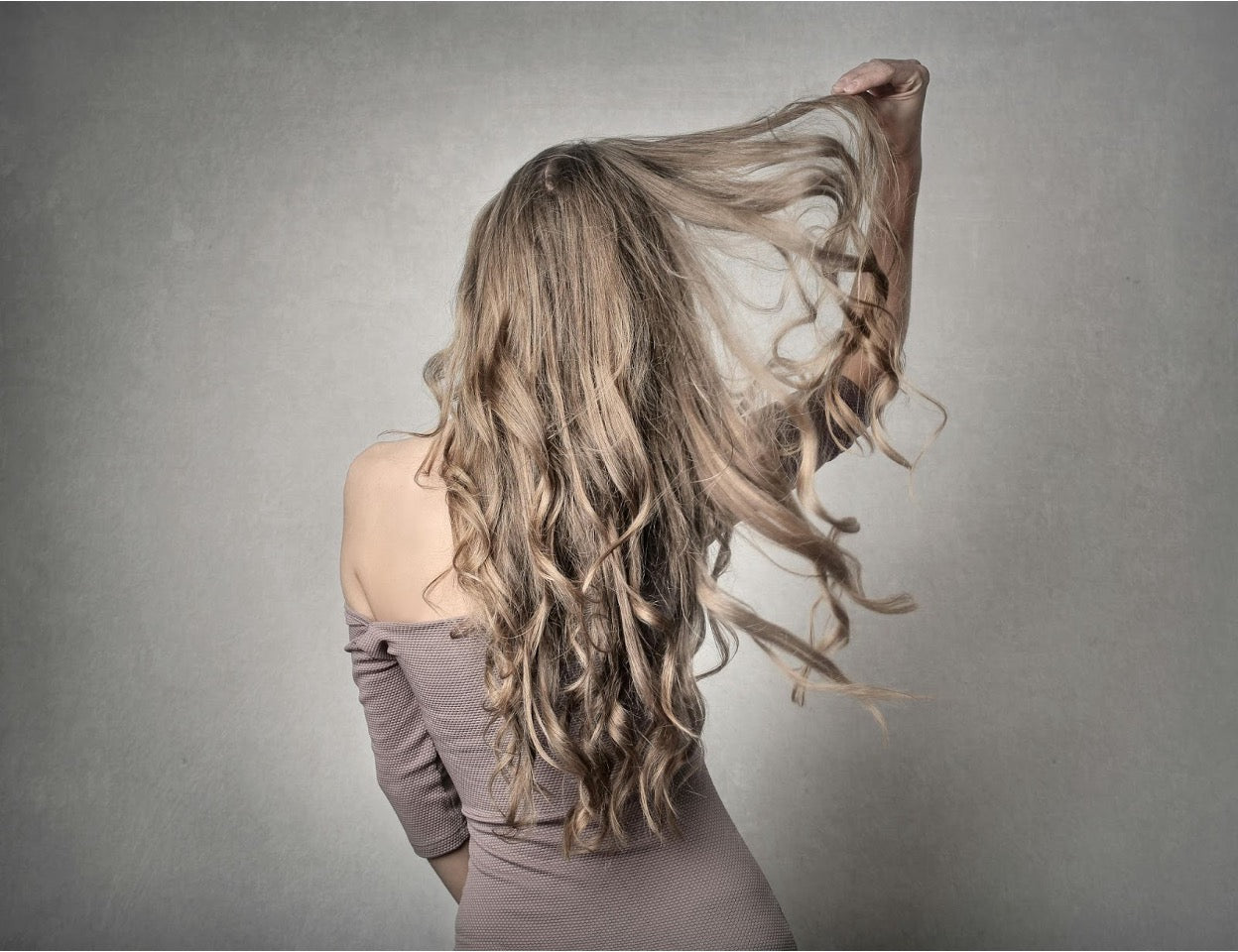Androgenetic Alopecia Hair Loss: Causes, Timeline & Treatment for Regrowth
BY TRYBELLO
Jul 4, 2025

Key Takeaways
- Androgenetic alopecia affects approximately 50% of men and women, with genetic predisposition and DHT sensitivity being the primary causes.
- Men typically experience receding hairlines and crown thinning, while women usually see diffuse thinning across the top of the scalp without frontal hairline recession.
- Lifestyle factors including stress management, proper nutrition, and scalp care play significant roles in managing androgenetic alopecia and supporting treatment success.
- Treatments like minoxidil and finasteride are most effective when started before significant hair loss occurs.
- Trybello's Hair Helper Spray combines scientifically-proven natural ingredients like biotin, caffeine, and castor oil to help manage androgenetic alopecia safely and effectively.
What Is Androgenetic Alopecia?
Androgenetic alopecia, also known as pattern hair loss, is the most common type of progressive hair loss affecting both men and women. If you're noticing thinning hair or a receding hairline, you're not alone.
This condition impacts approximately 50% of the population to varying degrees. While it's often called "male pattern baldness" in men and "female pattern hair loss" in women, the underlying mechanisms are similar in both genders.
Gender Differences
Men and women experience androgenetic alopecia quite differently.
For men, hair loss typically begins with a receding hairline at the temples, forming an "M" shape, and thinning at the crown (the vertex or top of the head).

In men, androgenetic alopecia hair loss often starts with a receding hairline and thinning at the crown.
Over time, these areas may connect, leaving hair only around the sides and back of the head. This distinctive pattern makes male androgenetic alopecia easy to identify even in early stages.
Women, on the other hand, usually experience a diffuse thinning across the central part of the scalp, while maintaining their frontal hairline.
You might notice your part widening or more scalp visibility when styling your hair. This pattern is classified using the Ludwig scale rather than the Norwood scale used for men.

Women with androgenetic alopecia may notice their part widening.
Many women find their hair loss is more noticeable after menopause when hormonal shifts accelerate the process, though it can begin much earlier.
Genetic Component
If you've ever wondered why hair loss seems to run in families, genetics provides the answer. Androgenetic alopecia has a strong hereditary component, with multiple genes contributing to your likelihood of developing this condition. The old myth about inheriting baldness from your maternal grandfather has some truth to it, but it's much more complex. Genes from both parents influence your risk.
These inherited genes determine several crucial factors: the sensitivity of your hair follicles to DHT (dihydrotestosterone), the age at which hair loss begins, and the pattern and extent of thinning you'll experience. Some people inherit highly DHT-sensitive follicles that begin miniaturizing in their early twenties, while others may not see significant changes until their forties or fifties.
Understanding your family history can help predict your hair loss journey, but it doesn't seal your fate. Even with strong genetic predisposition, modern treatments can effectively slow or reverse the process, especially when started early.
“Doctor-Approved Natural Spray Rapidly Boosts Growth & Thickness.
Why 100,000+ Women Are Switching to The TryBello All-Natural Solution!"
Join over 100,000 happy customers who’ve transformed their hair with our natural, doctor-formulated spray—rated 4.8/5 by more than 40,000 real users.
Proven Natural Ingredients
- • Caffeine Extract – Naturally blocks DHT and boosts blood flow to hair follicles
- • Biotin – Absorbs directly through the scalp for maximum results—no pills needed
- • Castor Oil – Soothes inflammation and locks in deep, lasting moisture
- • Rice Water Extract – Packed with proteins and minerals to strengthen hair and reduce shedding
Get Visible Results in 12 Weeks
- • Up to 45% increase in hair thickness
- • Reduces shedding and unclogs hair-draining nightmares
- • Supports regrowth in thinning areas
- • Leaves hair soft, shiny, and full of life
Ironclad 120-Day Growth Guarantee
No results after 4 months? Get 100% of your money back—no questions asked.


★★★★★
I started using this twice a day because I noticed my hairline receding. Didn’t pay attention to track results, now my stylist told me my hair has grown a lot since my last root touch up. I'm impressed! - Bailey

DHT's Role In Hair Loss
At the heart of androgenetic alopecia is dihydrotestosterone (DHT), a hormone that plays the villain in our hair loss story. DHT is a derivative of testosterone that binds to receptors in your hair follicles, triggering a process that gradually shrinks them until they can no longer produce visible hair. While DHT is necessary for other functions in the body, its effect on genetically susceptible hair follicles is devastating.
This hormone doesn't affect all follicles equally. Those on the top of your scalp typically have more DHT receptors than those at the back and sides, explaining why pattern hair loss affects specific areas.
How DHT Forms
DHT formation begins with testosterone, which circulates freely in your bloodstream. When testosterone encounters an enzyme called 5-alpha reductase (5-AR) in your skin and scalp, it converts to DHT. This potent androgen is about five times stronger than testosterone in its ability to bind to receptors in hair follicles.
Both men and women produce DHT, though men naturally have higher levels. In the scalp, 5-alpha reductase is particularly active, creating a localized environment where DHT can accumulate and affect susceptible hair follicles.
Follicle Miniaturization Process
When DHT binds to receptors in genetically susceptible hair follicles, it initiates a process called miniaturization. This doesn't happen overnight, it's a gradual transformation that occurs over months and years. Healthy hair follicles typically produce thick, pigmented terminal hairs. But under DHT's influence, these follicles begin shrinking with each hair growth cycle.
The process unfolds in stages:
- First, your hair's growing phase (anagen) shortens, meaning each hair doesn't reach its full potential length or thickness before falling out.
- Then, the follicle itself begins to shrink, producing progressively finer, shorter, and less pigmented hairs.
- Eventually, these miniaturized follicles produce only tiny, nearly invisible vellus hairs, similar to the peach fuzz on your face, before potentially becoming dormant entirely.
What's important to understand is that until the follicle is completely dormant, this process can often be reversed with proper treatment.
Androgenetic Alopecia Hair Loss Timeline

Androgenetic alopecia follows a predictable progression, though the speed varies dramatically between individuals.
For men, you might notice slightly more hair on your pillow or in the shower drain, or your hairline may begin receding at the temples, creating a more pronounced "M" shape. Women typically first notice their part widening or their ponytail becoming thinner. These changes often begin gradually in your twenties or thirties, though they can start earlier or later.
Another early indicator is a change in hair texture and behavior. Hair may become finer and less manageable, refusing to style as it once did. You might also notice increased scalp visibility when your hair is wet or under bright lights. These subtle changes often precede noticeable thinning by months or even years, making them valuable early warning signs.
FDA-Approved Treatments
Minoxidil Mechanism
Minoxidil, available over the counter in formulations like Rogaine, works as a potent vasodilator that increases blood flow to hair follicles.
When applied topically, it extends the growth phase of the hair cycle and revitalizes miniaturized follicles by delivering more oxygen, nutrients, and growth factors to the scalp. This process doesn't block DHT, but instead helps follicles thrive despite its presence.
Finasteride Benefits
Finasteride works differently from minoxidil by directly addressing the root cause of androgenetic alopecia. As a 5-alpha reductase inhibitor, it blocks the enzyme that converts testosterone to DHT, effectively reducing DHT levels in the scalp by up to 70%.
This reduction prevents further miniaturization of hair follicles and allows many to recover and produce thicker, healthier hairs again.
Potential Side Effects
While effective, FDA-approved hair loss treatments can come with side effects that should be considered.
Minoxidil's side effects are typically mild and localized, including scalp irritation, dryness, or unwanted hair growth in adjacent areas. Finasteride's potential side effects generate more concern, with some users reporting sexual side effects like reduced libido, erectile dysfunction, or decreased ejaculate volume.
Natural Hair Loss Solutions

While FDA approved treatments options are good, natural solutions offer hair growth benefits with fewer side effects, making them suitable for long-term use.
DHT-Blocking Ingredients
Saw palmetto extract stands out as one of the most researched natural DHT blockers, other effective botanicals include pumpkin seed oil, and rosemary extract , which performed comparably to minoxidil in clinical research.
The advantage of natural DHT blockers is their gentle, progressive action and excellent safety profile. While results may take longer to appear compared to pharmaceutical options, they're suitable for both men and women and can be used indefinitely without concerns about long-term side effects.
Natural Hair Growth Products
Natural hair products like Bello Hair Helper Spray, combine the most effective natural DHT-blocking ingredients with growth-stimulating compounds in a convenient topical formula. The formula includes castor oil to improve scalp health, caffeine to stimulate follicles and extend the growth phase, and biotin to strengthen hair structure. Users typically report reduced shedding within 4–6 weeks and visible improvements in hair density by the 3-month mark.
Diet Modifications
A nutrient-rich diet helps support healthy follicles and can boost the results of other hair loss treatments. Protein is particularly crucial, as hair is composed primarily of a protein called keratin.
Aim for lean sources like fish, poultry, eggs, and plant-based options such as legumes can improve your overall hair health.
Trybello's Natural Approach to Androgenetic Alopecia Recovery

Trybello Hair Helper Spray represents years of research into the most effective natural compounds for combating androgenetic alopecia.
We've carefully selected ingredients like biotin for structural hair strength, caffeine for follicle stimulation during critical growth phases, castor oil for enhanced scalp circulation, and specialized botanical extracts that naturally inhibit DHT production.
The spray delivery system ensures these active compounds penetrate directly to where they're needed most—your hair follicles. Simply apply twice daily to clean, dry scalp and massage gently to activate circulation and maximize absorption.
With our 120-day guarantee and thousands of satisfied customers already experiencing thicker, fuller hair, you can begin your hair recovery journey with confidence, knowing that effective, gentle treatment is within reach.
Frequently Asked Questions (FAQs)
Trending Topics
See our latests posts #TRYBELLO


